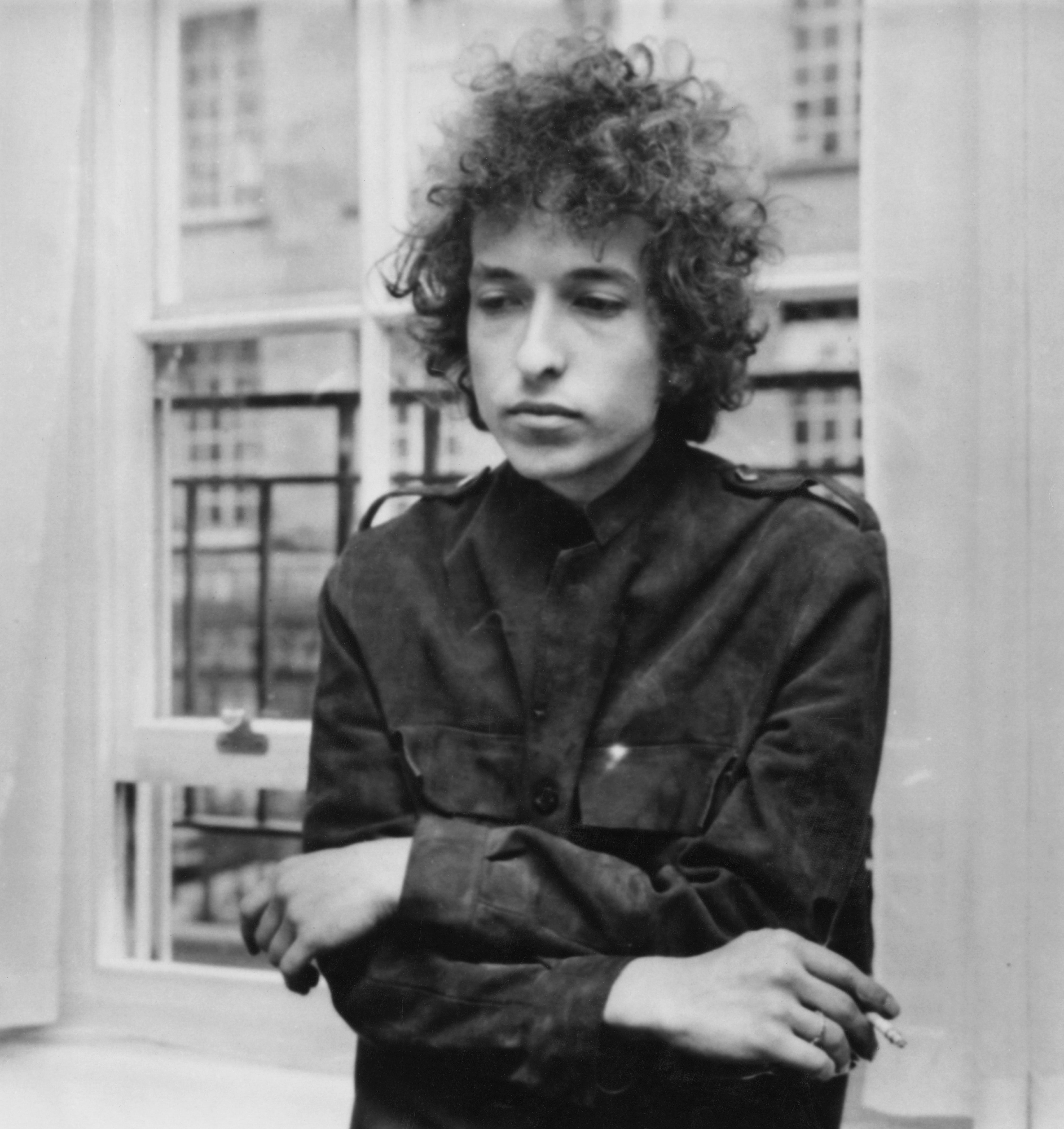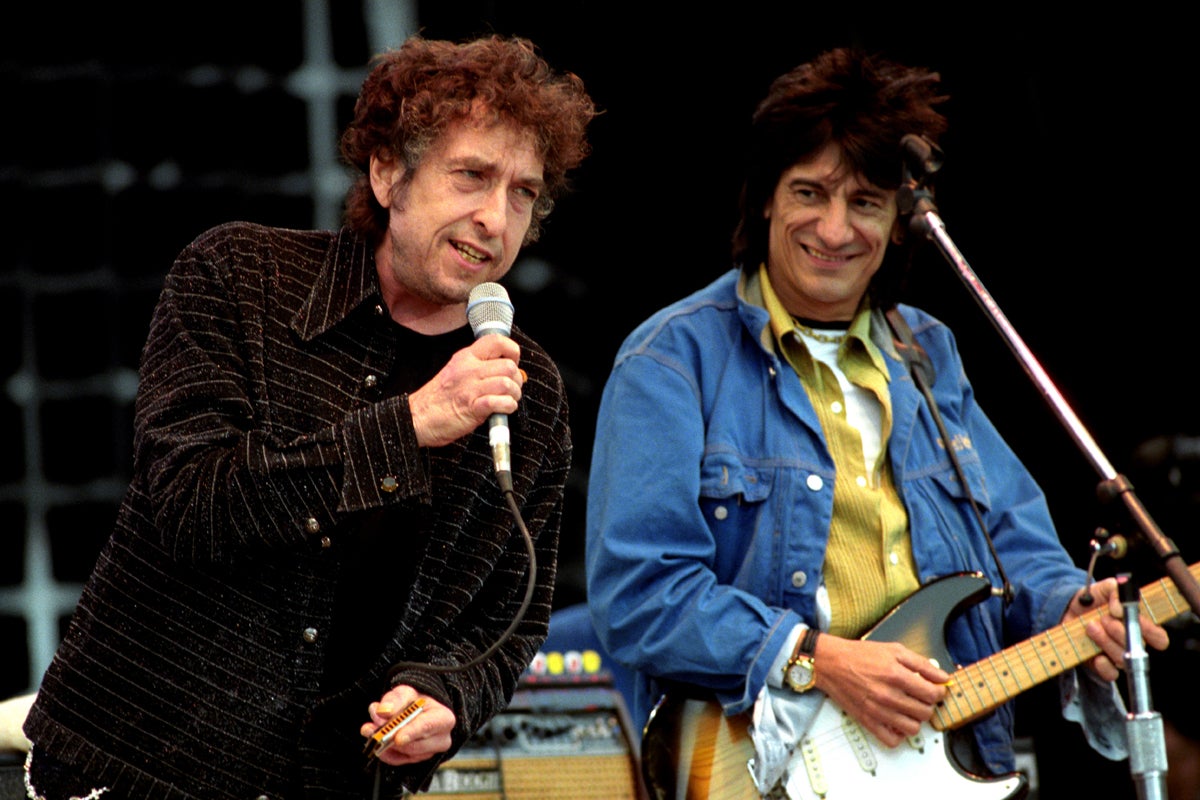A lighter side of Bob Dylan - a different look at the iconic troubadour on his 80th birthday
The troubadour turns 80 today and while much seriousness will be dedicated to his undoubtable genius, the fact is that ‘Bob is a comedian’, writes David Lister


On 24 May Bob Dylan turns 80. The tributes to the man who has stayed forever young (yes getting a song title in early) will be many. And they will celebrate an incomparable musician, lyricist, poet, protester, innovator, performer and recipient of the Nobel Prize for Literature. But as the intense seriousness of Dylan-worship begins, I can’t help but think of something I heard from Chrissie Hynde of The Pretenders, and a friend of Dylan. “What people don’t realise,” she said, “is that Bob is a comedian.”
Well, there could be any number of Dylan sayings that she may have been thinking of. “No one is free. Even the birds are chained to the sky.” Or maybe: “I accept chaos. I’m not sure whether it accepts me.” Or perhaps: “Some people feel the rain. Others just get wet.”
It’s her premise that a number of Dylan’s more opaque statements are deliberately designed to confuse as some sort of private joke. Dylan can indeed be a comedian. But he has also been inadvertently in comedic situations throughout his career. And, from talking to his entourage, people in his record company and filleting the numerous books about him, I have dug up some of those situations, in some cases never yet reported. They show another side of Bob Dylan (oops album title).

One of my favourite stories was told to me by someone who was on a tour of Australia with Dylan some years ago. Tina Turner was also on the tour, and Dylan took a fancy to one of her Australian assistants. Coming off stage, he said to her: “Did you enjoy the show?” In a strong Australian accent, with equally strong disdain, she replied: “No, I didn’t!” The great man was nonplussed. “Why, not?” he asked. She gave it to him straight. “You don’t talk to the audience. You don’t say hello. You don’t say good night.” “I’m not Frank Sinatra,” he drawled. “Well,” she replied, “you should be!” And she strode off.
The next evening, as his encore, Dylan astonished the audience with a rendition of “My Way”. Tapes of that can fetch pretty good sums on the black market.
Another occasion one wishes one could have been present at was when Dylan was on stage with Bono. The U2 front man was performing the Dylan classic ‘Blowin’ in the Wind’. According to a friend of the artist who was there, Bono duly sang the opening line “How many roads must a man walk down, before you call him a man?” Indeed, he sang it over and over again – “how many roads, how many roads, how many roads” – but wasn’t then segueing into the chorus: “The answer, my friend, is blowing in the wind.” Dylan apparently went a whiter shade of pale, a look of panic not often seen on the old poker face.
Usually, it was Dylan who played the jokes, or tried to, on unsuspecting journalists and his public. In November 1963, he told Newsweek: “I don’t know my parents. They don’t know me. I’ve lost contact with them for years.” Unfortunately for him, the enterprising Newsweek journalist, Andrea Svedberg, had discovered that his parents were in fact staying at a hotel round the corner, invited by their son to see him perform at Carnegie Hall.

Often, he told early interviewers that he had run away from home repeatedly from the age of 10. In October 1964 he told The New Yorker: “When I was 13, I was travelling with a carnival through upper Minnesota and North and South Dakota.” It wasn’t until 2005, some 41 years later that he amended that statement. He had meant that he had “seen” carnivals.
And then there was the time that Dylan was arrested and asked to state his identity. This one was reported, but bears savouring again. Dylan has an admirable penchant for exploring the towns and cities he lands in on what was, until Covid, his never-ending tour. In Long Branch, New Jersey, in 2009, as was his habit, he went for a walk around the city, something that was unusual enough a pastime to attract police attention.
Bob is not authentic at all. He’s a plagiarist, and his name and voice are fake. Everything about Bob is a deception
And here, spare a thought for officer Kristie Buble, a mere 22-year-old and understandably unfamiliar with the rock stars of her parents’ generation. On duty that day, she became suspicious at seeing what she called an “eccentric-looking old man” strolling around in the rain. Buble was to tell ABC News: “I wasn’t sure if he came from one of our hospitals or something. He was acting very suspicious. Not delusional, just suspicious. You know, it was pouring rain and everything.”
Buble took Dylan back to his hotel to see his ID, then called her precinct to check who this Bob Dylan was. As Ian Bell records in his definitive biography The Lives of Bob Dylan, “after the laughter down the line from the station house had subsided, the artist was free to go about his business”. In an interview later, Dylan mused: “I guess in that neck of the woods they’re not used to seeing people walking in the rain.”

Almost as strange, was when he was doing a show in Liverpool. He not only went for a walk, but to the amazement of the National Trust, which now owns John Lennon’s childhood home, Dylan turned up, paid his £16 and queued for a tour round the house as well as taking a bus trip to various Beatles sites including Strawberry Fields. “He spent ages going through photo albums and was thrilled at all the memorabilia,” said a representative of the trust.
Dylan was able to laugh at himself too. Take the introduction to his concerts that bemused audiences around the world in the noughties and beyond. Not many superstars would have their stage manager introduce them as a “has-been” after all. In fact, Dylan had his stage manager Al Santos read out – every night before he walked on stage – a couple of sentences from a feature article by journalist Jeff Miers in the Buffalo News in 2002. The words had amused Dylan enough to make them the start of his act. And so audiences heard the words: “The poet laureate of rock’n’roll. The voice of the promise of the Sixties counterculture. The guy who forced folk into bed with rock, who donned make-up in the Seventies and disappeared into a haze of substance abuse, who emerged to ‘find Jesus’, who was written off as a has-been by the end of the Eighties, and who suddenly shifted gears and released some of the strongest music of his career beginning in the late Nineties... ladies and gentlemen, please welcome Columbia recording artist Bob Dylan.”

When Dylan took his Rolling Thunder Revue on the road in 1975, he not only travelled on the musicians’ tour bus, he drove the bus. And the tour had one delicious example of Dylan’s mischief. One of the fans who came to see it was a 19-year-old model and would-be actress, Sharon Stone. She came with her mother and was introduced to her idol.
At a subsequent gig on the tour, as recounted by Sharon Stone herself in the 2019 Martin Scorsese film about the tour, Dylan invited her to his dressing room and played at his piano a song he said he had just written for her. For her! The song was the poignantly romantic classic, “Just Like a Woman”. Not surprisingly, Stone was knocked sideways by the compliment. We are not privy to how the day developed after that. And only later did a member of Dylan’s band tell the ingenue that the song was 10 years old.

And then there are the official bootlegs, the treasure trove of Dylan’s hitherto unreleased tracks that have now been given official sanction in numerous, heavily publicised releases over many years. I went to the official launch of one of the most recent of these, and took one of Dylan’s closest associates aside to ask him if Bob had had a say in choosing the track listing. There was a roar of laughter. “You’re joking,” he said. “He probably hasn’t even listened to any of them.”
If Dylan’s closest associates can find him bewildering, so can fellow music legends. On one occasion Dylan and Leonard Cohen found themselves performing in the same city. They decided to meet for breakfast. Dylan told Cohen he much admired his song “Hallelujah” and asked how long it had taken Cohen to write. Cohen said that if one took into account the many revisions and additions he had made to the song during its long creation, then it would be fair to say that it took over five years. Cohen, in return, said that he very much liked a Dylan song “I and I” on his latest album. How long had that taken to write? Dylan replied: “Around 15 minutes.”

And spare a thought for the indignity suffered by Joni Mitchell. In the early Seventies, both she and Dylan signed for Geffen Records in the US. The owner, David Geffen, had a listening session for their first albums on the label: Dylan’s Planet Waves and Mitchell’s Court and Spark, both excellent works. Both musicians listened eagerly first to Dylan’s album, and then Geffen put on Mitchell’s. Dylan promptly fell asleep. To add insult to injury, Planet Waves kept Court and Spark off the number one spot in the Billboard albums chart.
A still unamused Joni Mitchell said six years later that Dylan was probably “trying to be cute” in front of the record label boss. She chose her words less diplomatically in 2010, saying: “Bob is not authentic at all. He’s a plagiarist, and his name and voice are fake. Everything about Bob is a deception.” A dangerous woman to fall asleep in front of.
Something similar, again treading the thin line between comedy and rudeness, occurred with Neil Diamond at The Last Waltz, the farewell concert by The Band, at which Dylan and Diamond were two of the guest artists. As Diamond left the stage, he said to Dylan: “Follow that.” Dylan replied: “What do I have to do, go on stage and fall asleep?”

But, that is the one of the great joys of Bob Dylan: the unpredictability of the ultimate enigma. Back to that film about the 1975 Rolling Thunder Revue tour. One of the many fascinations was that the lead guitarist in Dylan’s band was Mick Ronson, with his long blond hair, the glam rock sidekick of David Bowie from the Spiders from Mars. How well, one could not help but wonder, did Dylan hit it off with the glam-rock Yorkshireman?
One of the singers in the show, Ronee Blakley, recalled that it was impossible to get to know Dylan and not love him. During the tour, she put this to Mick Ronson, asking him if he had also found that he was loving Dylan more and more as the tour went on.
Ronson replied that it was hard for him to say. Dylan had never actually spoken to him.
Join our commenting forum
Join thought-provoking conversations, follow other Independent readers and see their replies
Comments